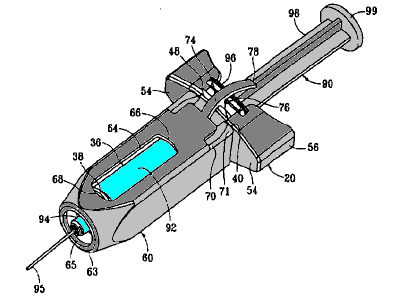Endothermic Reactions – The Freeze Kit
I’m sure many of you have seen an ice pack before. A simple and harmless device, yes? By cracking a tube containing ammonium nitrate (NH4)(NO3) within a pack of nothing more than water, an endothermic reaction occurs in which heat is drawn from the reactants and is released, making the pack itself ‘cold’ or ‘icy’. Endothermic reactions provide us with this basis – a method for drawing heat out from substances, and this is an often overlooked tool. Often we link destruction through more conventional forms, explosions and gunfire, effects that use force to get their job done. But this in truth is perhaps the least efficient way we can go about the process of destruction.
Rather than waste our strength creating force, why not use a bit of intuition to reduce the force necessary? A large subset of substances, when chilled, become weak and brittle in their molecular bonds – energy itself is being removed after all, so why wouldn’t that be case? Thus is the inspiration for my current idea – the Freeze Kit.
The kit itself will be little more than a thin though sturdy syringe linked to three tubes. One carries an offset of prior mentioned ammonium nitrate in a highly condensed form, the other, high-pressured hydrogen. By jamming the syringe into something confined – a small crack, the hinge of a door, a lock, anything of the sort, and then ‘injecting’ the solution, the reaction is allowed spark to life. The way the tube system is set up forces the hydrogen to react first upon air, pressured in a way to condense into water over the surface of the injection, which then meets with the ammonium nitrate. The final tube is a little something I added to manipulate the strength of the reaction, causing it to manifest at a much stronger rate than… well, than an ice pack. The result is a near instantaneous drain of heat from the subject of injection, causing, as mentioned, an unstable and brittle effect.
So what are the uses of such a kit, you ask? Pending size and strength of a particular kit, this could be used to cause otherwise impenetrable walls to become ram-able, to have gates removed from their hinges as they shatter, or even something as subtle as cracking a locking mechanism with little more than the faint sound akin to cracking ice rather than breaking down a barrier itself, keeping ourselves quiet and secretive. I’m sure once I get a proper prototype and show you each its proper usage, you’ll find some use or another for it.
Self-notes: Failure theories and Thoughts
- Uncontrollable injection rate dangerous for user? Create a plausible trigger mechanism?
- Lack of proper injection means? What metal should be used for the syringe itself to ensure stable entry?
- Poor choice of reactants? Other possible choice: some endothermic heats of solution of relatively non-toxic, inexpensive salts in kilo-calories/mole:
- NH4Cl = 3.533, NH4NO3 = 6.140 KNO3 = 8.340
- Current Model Notes given: Here.

March 20th, 2009 at 9:57 am
Status Update: I have a couple functional prototype models I’ve been tinkering around with. The reaction functions fine, very similar to a set of armor piercing bullet rounds I found we are beginning to stock aboard which do much the same upon impact of a shot.
I fixed the entry problem on some surfaces via a diamond-tipped needle that is sure to force itself into most given proper force.